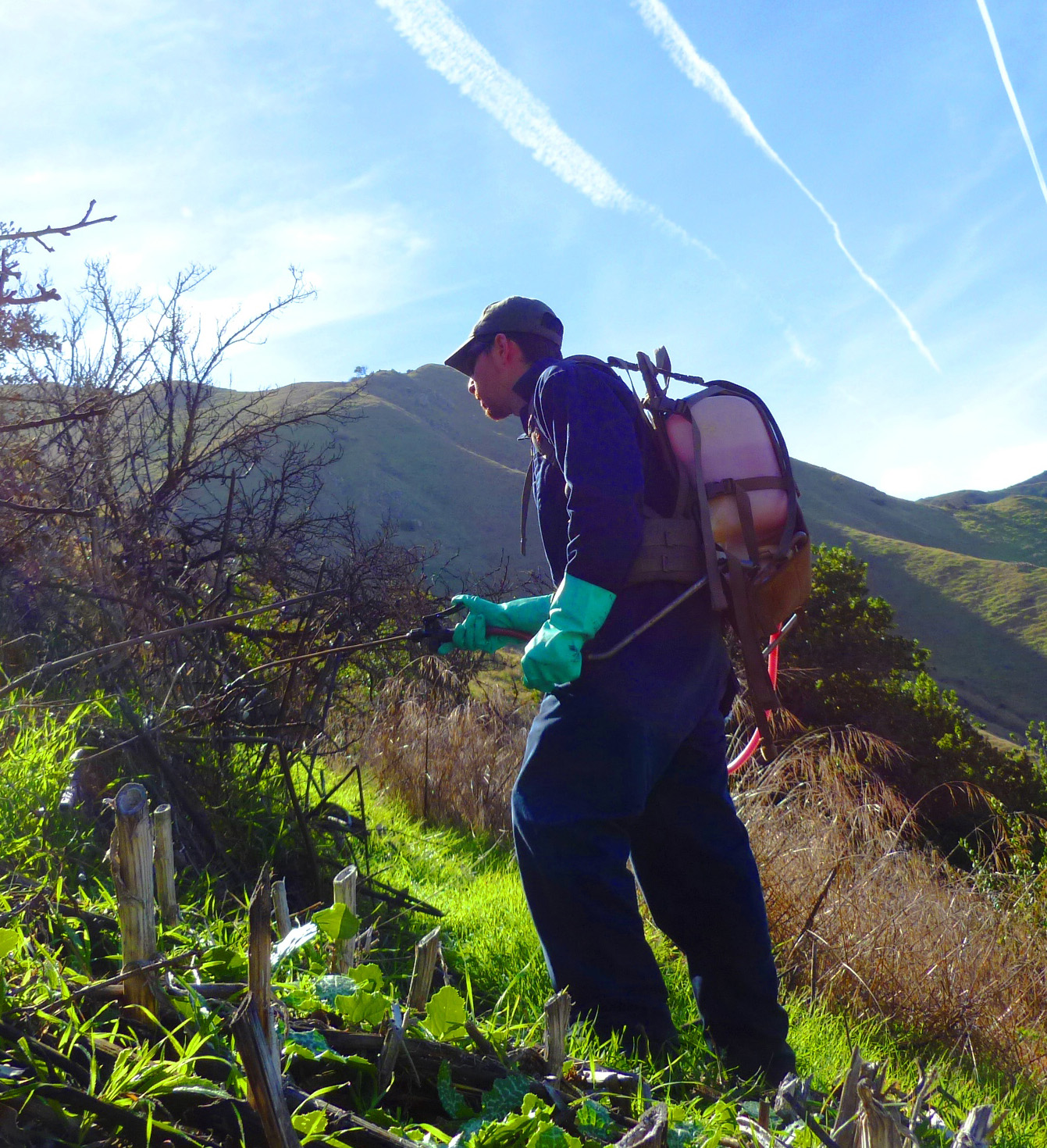
Spot-treating invasive milk thistle on Catalina Island with a backpack sprayer.
Cal-IPC supports the judicious use of herbicides as an important and appropriate tool in the Integrated Pest Management (IPM) toolbox for controlling invasive plants in natural areas. Please read our policy statement, linked below.
Invasive plant management projects should be strategic, for instance by removing small infestations of invasive plants before they spread further (and require more extensive intervention in the future). Unlike the use of herbicides for agriculture or landscaping, applications in natural areas are typically small in scale, of limited duration, and aimed at protecting biodiversity.
Cal-IPC has published a “Best Management Practice for Protecting Wildlife When Using Herbicides for Invasive Plant Management” which includes risk charts for herbicides used by land stewards and best practices for avoiding impact to wildlife.
Glyphosate is the most-used — and most-studied — herbicide in the world. To date, scientists and regulatory agencies have predominantly agreed that it is safe. However, court cases have agreed with plaintiffs who maintain that their extensive use of glyphosate over decades may have contributed to their illness and that the product’s marketing and labeling should have urged more caution when using it. Cal-IPC tracks new studies that add to the already immense literature on glyphosate’s impacts. Our position statement is linked below. In short, we believe that glyphosate use for strategic invasive plant management, applied in accordance with its label and with appropriate personal protective equipment and best practices, poses very low risk for wildlife, applicators, and the public. Therefore, it should remain a tool in the IPM toolbox for land stewards.
Cal-IPC’s Policy on the Use of Herbicides for Land Stewardship
Cal-IPC’s Policy on Integrated Weed Management
Cal-IPC’s Position Statement on the Use of Glyphosate for Invasive Plant Management (including background)
Cal-IPC’s BMP Manual for Protecting Wildlife When Using Herbicides for Invasive Plant Management (with herbicide risk charts)
Cal-IPC’s Guide to Talking about Glyphosate: A Communication Guide for Natural Resource Managers
Cal-IPC’s Letter to the County of Los Angeles on herbicide use
